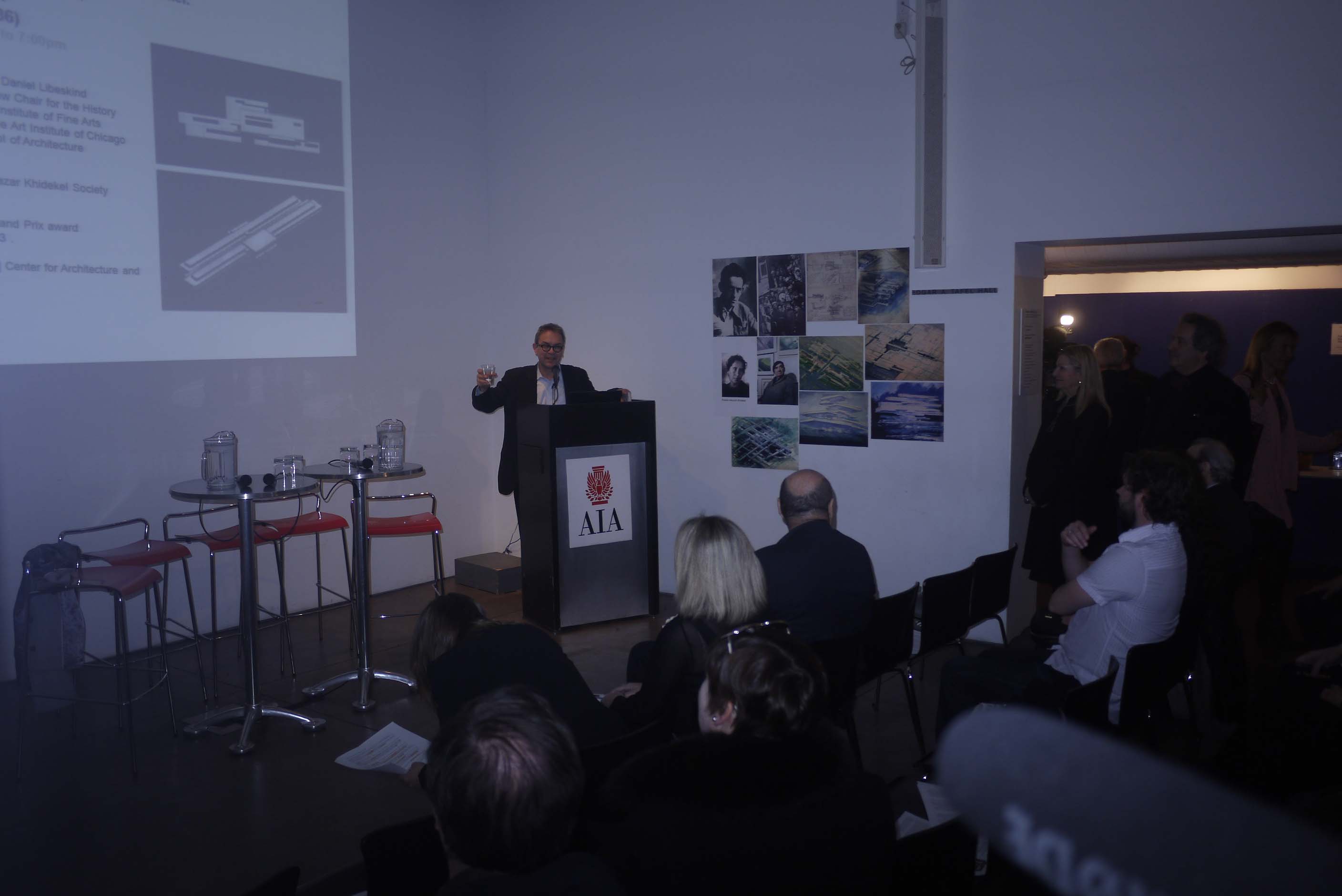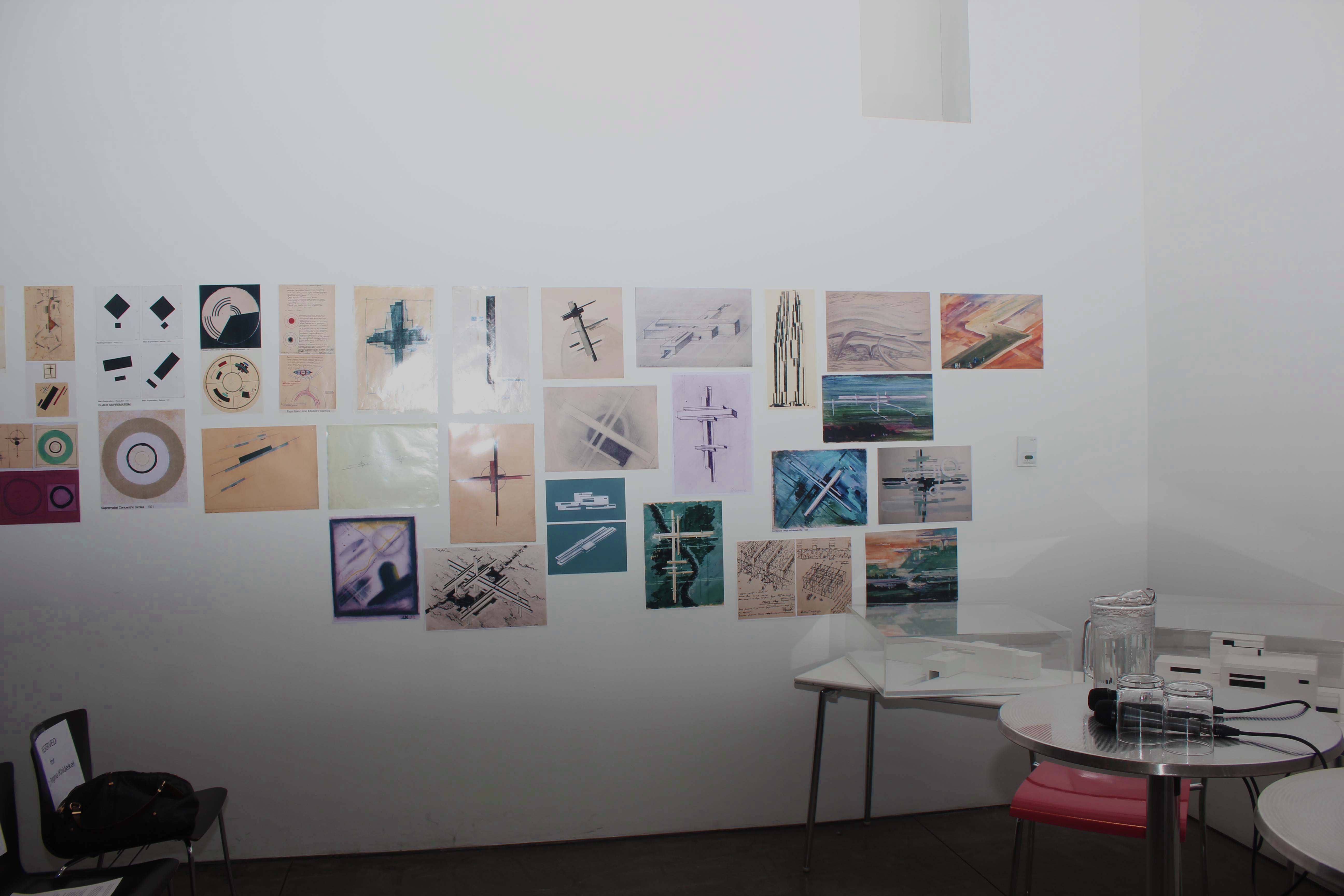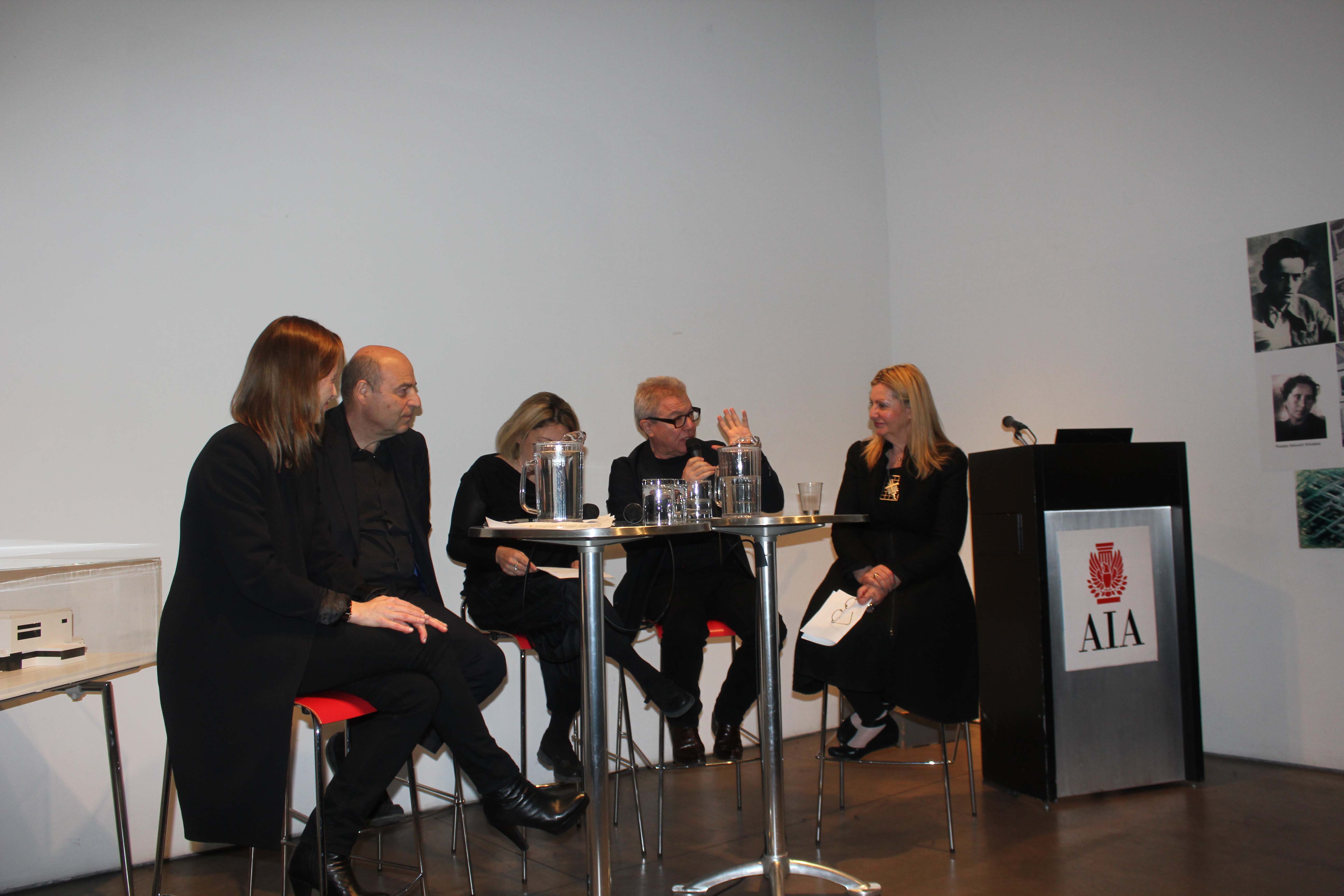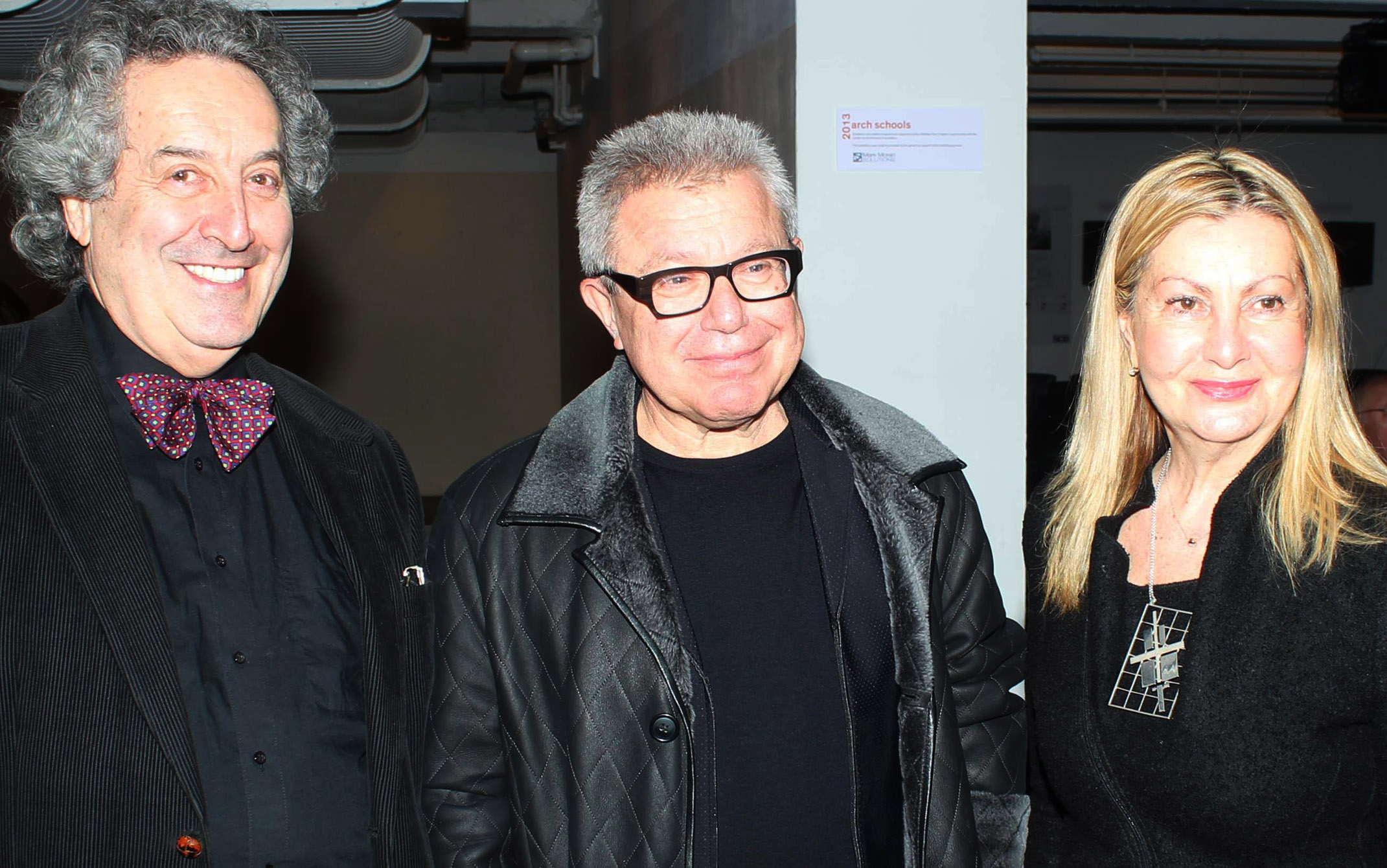by Claire Webb
Suprematism, an art movement of the early 20th century conceptualized by Kazimir Malevich, still rankles many skeptics of modern art. But the key to appreciating these pieces is that they are theory manifested; they are born of a way of seeing that is inextricable from a social philosophy. In the case of Malevich, the famous “Black Square” rejected materialism, instead embracing a “pure feeling.” For him, the making of art was a spiritual experience, and that feeling couldn’t be contained for the cursory glances of the casual observer.
Of Malevich’s students, Lazar Khidekel was the only one to bend the Suprematist belief system into architecture. Surprisingly, he is not very well known. On 3.11.14, Khidekel’s daughter-in-law, Dr. Regina Khidekel, president of the Lazar Khidekel Society, introduced a large audience to him. Others familiar with his work – Daniel Libeskind, AIA, Dr. Jean-Louis Cohen from New York University’s Institute of Fine Arts, Dr. Maria Kokkori from the Art Institute of Chicago, and Anna Bokov, an architect in Moscow and a doctoral candidate at the Yale School of Architecture – contributed to the discussion.
Khidekel’s transition from artist to architect is an interesting one, and somewhat unexpected. The Constructivists – also active in Russia and essentially contemporaneous to the Suprematists – were interested in tangible objects that could be functionally used to support a new, sometimes fantastical, society (see Vladimir Tatlin’s Tower). The Suprematists, on the other hand, dealt in abstractions and pure forms, seeking to crystallize the values of a utopian society. Architecture, on its surface, might seem an awkward means for mapping Suprematist ideals in large-scale physical form. However, Khidekel – Malevich’s star pupil – was able to achieve this balance; his “architectons” are floating 3-D constructions embodying Suprematist form and style.
Kokkori pointed out that Khidekel lived until 1986, and although he was the teacher, his cohort of students did not outlive him; he had to carry the “Suprematist torch” even as art moved on. This might help explain why, was Cohen noted, Khidekel never came to be featured in any “grand narrative” of Modern Art. Simple geometries that belied social revolution – a bedrock of what we think of when we think of “modern” – never invoke Khidekel’s name. Or, perhaps, seeking to unite disparate realms of theory (art) and practice (architecture) – as a “visionary formalist,” to use Bokov’s term – Khidekel’s unusual buildings did not translate and thrive beyond their context.
Gazing at white squares or an entire wall painted different shades of black, it’s easy to forget that these artists were revolutionary. Swiftly changing ideas at the turn of the century rippled and then reverberated through every discipline from art to physics. In the wake of Albert Einstein’s publication of a series of groundbreaking theories in 1905 that radically shifted the socially accepted notion of space and time, artists grappled with challenging modern ideas in their work. Pablo Picasso and Georges Braque famously explored their subjects cubically, fragmenting limbs and faces as a means of presenting a three-dimensional subject – now operating in a newly understood four-dimensional world – on a two-dimensional canvas. Khidekel was caught up in these rumblings, too. Libeskind went so far to call him a “prophet” for this new world as the artist/architect thought about creating works in a non-religious context.
While there is sometimes a grander social mission – or at least an ethos or goal – at play in many architectural projects today, it’s easy to lose sight as the medium demands nitty-gritty tasks. Khidekel’s work almost a century ago effectively straddled two realms: abstract, philosophical space that art seeks to untangle, and the technical aspects that building necessitates. Indeed, his built projects, such as a radio theater and educational institutions, are Suprematist constructions come to life: stunning, extreme orthogonals that sought to realize idealistic programming.
This adherence to ideals and celebration of pure form, Libeskind mused, could be “what’s missing in architecture today.” As he aptly noted, “We can draw a million squares [in CAD] without really loving them.” Compare this to Malevich, Popova, and Khidekel in their studios laboring, agonizing, and contemplating different shades of black, the texture of white, how a picture changed with adjusting the angles of simple shapes on a canvas. Perhaps the skeptics trolling MoMA would do well to come to a deeper understanding of “the black square,” and Lazar Khidekel of the Suprematists could gain the wider recognition he deserves. ‘
Claire Webb studied astronomy and philosophy at Vassar College, but an interest in art history and architecture led her to the position of Marketing Director at Edelman Sultan Knox Wood / Architects.
Event: Celebration of the 110th Anniversary of Lazar Khidekel: An artist, visionary architect, designer, theoretician, and a pioneer of environmentalism (1904-1986)
Location: Center for Architecture, 03.11.14
Speakers: Rick Bell, FAIA, AIANY Executive Director (Introduction); Daniel Libeskind, AIA, Founder, Studio Daniel Libeskind; Dr. Jean-Louis Cohen, Sheldon H. Solow Chair for the History of Architecture at New York University Institute of Fine Arts; Dr. Maria Kokkori, Research Fellow, The Art Institute of Chicago; Anna Bokov, Ph.D. Program, Yale School of Architecture; and Dr. Regina Khidekel, President, Lazar Khidekel Society; Roman Khidekel, and Mark Khidekel (closing remarks)
Organizers: Center for Architecture and the Russian American Cultural Center



